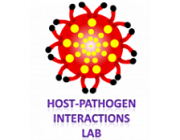Citation:
Victor Yashunsky, Kharilker, Leorah , Zlotkin-Rivkin, Efrat , Rund, David , Melamed-Book, Naomi , Zahavi, Eitan Erez , Perlson, Eran , Mercone, Silvana , Golosovsky, Michael , Davidov, Dan , and Aroeti, Benjamin . 2013.
“Real-Time Sensing Of Enteropathogenic E. Coli-Induced Effects On Epithelial Host Cell Height, Cell-Substrate Interactions, And Endocytic Processes By Infrared Surface Plasmon Spectroscopy”. Plos One, 8, 10, Pp. e78431. doi:10.1371/journal.pone.0078431.
Publisher's VersionAbstract:
Enteropathogenic Escherichia coli (EPEC) is an important, generally non-invasive, bacterial pathogen that causes diarrhea in humans. The microbe infects mainly the enterocytes of the small intestine. Here we have applied our newly developed infrared surface plasmon resonance (IR-SPR) spectroscopy approach to study how EPEC infection affects epithelial host cells. The IR-SPR experiments showed that EPEC infection results in a robust reduction in the refractive index of the infected cells. Assisted by confocal and total internal reflection microscopy, we discovered that the microbe dilates the intercellular gaps and induces the appearance of fluid-phase-filled pinocytic vesicles in the lower basolateral regions of the host epithelial cells. Partial cell detachment from the underlying substratum was also observed. Finally, the waveguide mode observed by our IR-SPR analyses showed that EPEC infection decreases the host cell's height to some extent. Together, these observations reveal novel impacts of the pathogen on the host cell architecture and endocytic functions. We suggest that these changes may induce the infiltration of a watery environment into the host cell, and potentially lead to failure of the epithelium barrier functions. Our findings also indicate the great potential of the label-free IR-SPR approach to study the dynamics of host-pathogen interactions with high spatiotemporal sensitivity.
